Scenario reflection on transitions to better meet the needs of our children
Circle time to line up to outdoor play space transition:
At circle time the children sat on the carpet to listen to Educator 1 read the story of Sun Up, Sun Down, by Gail Gibbons. The children were not interested in the book and Educator 1 showed signs of frustration by reading the story louder and rudely telling the children to be quiet. “(24) Getting the children’s attention – Ensure that you have children’s full attention before you give them any information” (N.Malenfant. 2006), Educator 1 did not have the children’s attention. Educator 1 out of frustration, choice not to finish the story and announced abruptly and loudly “We are going to go outside!” Educator 2 walks away from the carpet to get a drink of water from the kitchen sink. Both Educators did not pay attention to the children.
Most of the children stood up quickly and ran to the front door. The remaining children stayed at the carpet looking puzzled then followed the other children to an unorganized group of children.
Tables were bumped, children pushed, a child was knocked over, children argued – who was going to be at the front of the lineup, while both Educators rolled their eyes. Educator 2 opened the front door, and allowed the children to run to the outdoor play space.
In a matter of minutes, the centre was filled with chaos, loud giggling, screeching – “we are going outdoors!”, sound of a crying child, and the stampede for running feet. The Educators both sighed. “ (4) Ensuring children’s safety – safety first! Never take anything for granted, and supervise children at all times. Stay beyond reproach. The frequency of injuries is linked directly to the quality of supervision” (N.Malenfant. 2006).
Time to collaborate and reflect on what happened:
As I reflected it was transparent this transition was not facilitated well. Educators 1 and 2 were not prepared or engaged with circle time or directions for the children to facilitate positive transitions. There was no clear communication, respect to the children and property, or educator accountability to being responsible. The educators gave up. Nicole Malenfant speaks of the importance of “(18) Giving clear verbal directions. Use positive phrasing letting children know what is the expected behaviours”. (N.Malenfant. 2006). E.g. Educator 1 could have role modeled a calm talking voice, asked the children what do they think sitting quietly looks and sounds like, and acknowledge the children’s effort in cooperating. Then engage the children with the story of Sun Up and Sun Down by asking open ended questions throughout the story. Adding a silly sounding voice is a fun why to grab the children’s attention.
The environment around the children was disruptive. Books on the carpet floor, the cd player in the opposite corner played fast paced music, and the lights were bright. There were too many tables in the centre for the number of children attending. An over stimulated environment.
The children had to make decisions on their own which were prompted by impulse. E.g. run to the door, pushing, arguing, and screeching. They were not able to use social-emotional skills to help “solve their own problems independently, to see other perspectives, to negotiate, and to make compromises” (D.F. Miller, 2013. p. 199) as they did not have role models to show them these skills.
Review, re-evaluate, re-think, and redefine:
Routine and transitions: A Guide for Early Childhood Professionals states “(7) Organizing the physical space – The physical organization of the room or of an outside play area tells a lot about the quality of the child care centre. A physical setting that is warm stimulating, comfortable, functional and hospitable for parent and educators as well as children will foster well-being, socialization and individual responses to needs, as advocated by democratic pedagogy”(N.Malenfant. 2006).
Environment Setting: Lights turned down low; carpet is free from objects, the only sounds you can hear are the Educators calm, soft and silly voices. A light green coloured box filled with pastel colored wrist ribbons for the children to use in the same motion when they hear the words up and down, a bright blue line marked with masking tape on the floor to navigate the children from the carpet area to the lineup line.
Implementing new learning strategies for both Educator and Children:
Circle time has been planned by Educator 1 and 2, with stories, stand up activities, and wrist ribbons (for each child) about dance. “(1) Planning and organization – it is important to plan routines and transitions as it is any aspects of the program. Well planned transitions encourage learning, motivation and interpersonal relationships in children, who are proud to acquire new abilities. It takes time and energy to plan routines and transitions. Anticipating difficult situations and preparing strategies to increase the children’s cooperation. They consume a big part of everyday” (N.Malenfant. 2006).
At the beginning of circle time, Educator 1 lets the children know afterwards they will be going outdoors to play. Educator 2 is assisting the children by placing their wrist ribbons on. If circle time extends naturally for a longer period of time, prior to the last circle time activity, remind the children that outdoor play will follow this (last) activity.
Educator 1 ends circle time with the story “Elephants Cannot Dance” (M.Willems, 2009). The children enjoyed the story especially Educators 1 character silly voices “(19) Modulating your voice – Different tones of voice surprise children and gain their attention. Why not speak like a little mouse or a robot, or imitate voices hear on TV shows? Children enjoy hearing adults play with their voices. They perceive it as music, as pleasurable game” (N.Malenfant. 2006).
Educator 1 verbally guides the children in a soft quite voice and “Add a physical component for fun and engagement” (D.F. Miller, 2013. p. 206), to the transition strategy. “Children, we will be going outdoors soon so let’s put away our books and wrist ribbons.” A few minutes go by as the children follow the role modeling of Educators 1 and Educator 2 with singing and team clean up. ”Our clean up is complete. Well done everyone. When I say it is time to line up, softly like a ballerina “tip-toe like a dancer” (D.F. Miller, 2013. p. 206), to our lineup line and then slowly twirl once on the blue line marked on the floor to face Educator 2. Educator 2 is looking forward to walking you to our outdoor play space. Does anyone have any questions about how we are going to move to our lineup line?… no…well… it is time to line up” says Educator 1.
While Educator 1 was explaining the movement strategy to the children for the lineup line, Educator 2 moved to the front end of the lineup line to receive the children. She waves at the children when Educator 1 explains they will face Educator 2. As the children softly, calmly, tip-toe, and face Educator 2 she quietly acknowledges their efforts to arriving to the lineup line in a positive manner “(25)
Using positive reinforcement – Use encouragement — refer to all the information we have on this topic. Tell children that we appreciate their appropriate behavior is an effective way to implement positive reinforcement” ”(N.Malenfant. 2006). At the same time, Educator 2 is quietly tip-toeing (backwards) to the front door to allow the movement to continue out the door to the outdoor play space. Some children giggle as they realize they are tip-toeing outdoors. Educator 2 is “(14) Building a game bank – Gather a variety of activities that can be done during routines and transitions”(N.Malenfant. 2006).
While Educator 2 receives the children, Educator 1 gathers the supplies they need for their outdoor play and lines up at the back of the lineup line to follow the children to the outdoor play space.
A new transition pattern has evolved:
I believe for a successful transition, “special attention must be paid to transition periods to hold children’s attention, to keep them on task, and to nudge them to the next activity. Excellent planning, organization, and an upbeat, optimistic attitude can go a long way to help ease children along” (D.F. Miller, 2013. p. 205).
I feel the combination of being “patience and engaging to hold a child’s attention, encourage a child to do their best to stay on task, and to provide an upbeat and optimistic attitude is truly who I am and are strengths I bring to the early learning environment. And more importantly strengths of how I can support a child in my centre. The guidance I gave to our centres educators in the above transition scenario to support and improve the scenario is my style of professional practices and support to my co-educators. When I look at my Johari Window box it reminds me who I am and what I can bring to share with my children, families and staff.
“When one believes in who they are, are able to be their real self with others, to give their best to others, they express self love and love for others.”
J.P.B.
Example of documentation: Direct
ECC 157 Self Reflection, Johari Window Assignment
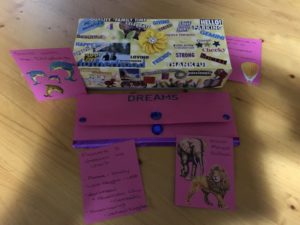
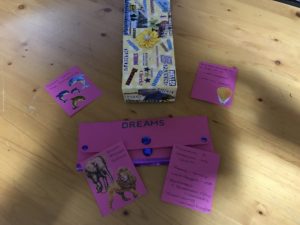
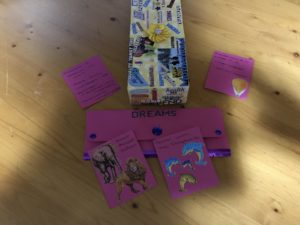
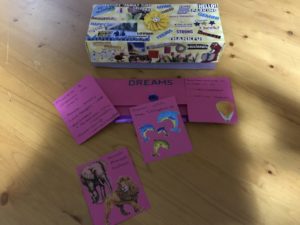
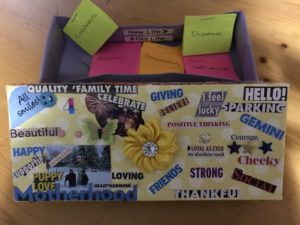
Example of documentation: Indirect
Effective Circle Times Feb 2009
Creating Positive Relationships with Children through Viualization May 2009
References
Malenfant, N., (2006). Routines and Transitions: A Guide for Early Childhood Professionals. St. Paul, MN: Red Press.
Miller, D. F., (2013). Positive Child Guidance, 7th edition. Belmont, CA: Wadsworth Cengage Learning.